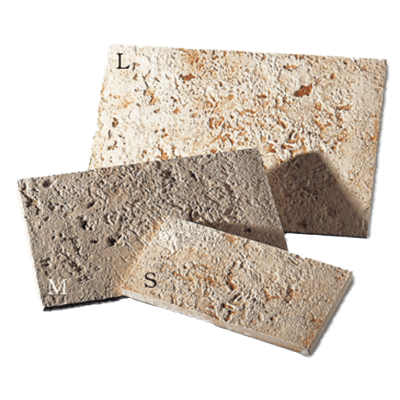All Categories
History
This section provides an overview for faux stones as well as their applications and principles. Also, please take a look at the list of 0 faux stone manufacturers and their company rankings.
Table of Contents
Categories Related to Faux Stones

A faux stone is an artificial stone material designed to mimic the appearance and texture of natural stone.
It is used in architecture, landscaping, and interior design. Being lightweight, faux stone eases transportation and handling, and reduces structural load in construction. Its flexibility, compared to natural stone, makes it easier to work with.
Faux stone offers a broad range of colors and designs, enabling unique design possibilities not achievable with natural stone. However, it may not perfectly match real stone in fine details. Repeated patterns may be visible, so it is important to inspect the actual product before purchase.
Faux stone is used in various construction-related applications:
Used for enhancing building exteriors, it is lighter and easier to process than natural stone. It comes in various colors and designs, and maintains its appearance well over time.
It is also used for decorative elements like columns and arches, adding style or historical ambiance to buildings.
Employed as flooring or wall material, especially in high-durability-required areas like commercial and public spaces. Its heat resistance makes it suitable for kitchen countertops, and its moisture resistance is ideal for bathroom walls and floors.
Popular for paving paths and walkways, its lightweight nature makes it easy to use. Its natural stone appearance is ideal for water features, gardens, and landscape designs.
Manufacturing methods and principles vary based on the base material:
Resin-based faux stone, made primarily of resin, replicates natural stone's appearance and patterns. It involves mixing resin with pigments, molding, and polishing to resemble real stone.
Cement-based faux stone is made by mixing cement and aggregates, forming shapes, and allowing the cement to harden. After curing, finishing processes refine the texture and appearance.
Some faux stones are created through chemical reactions, mixing raw chemicals under high temperatures and pressures to synthesize the stone.
Various types of faux stone exist:
This type mimics natural river and lake rocks. Used in gardens and landscaping, its smooth, rounded surface offers a natural look. Ideal for water features, pathways, and garden designs.
With smooth, curved surfaces, round canyon resembles naturally weathered stone. It is versatile in color and size, suitable for gardens, interior design, and other applications.
Known for weather resistance and minimal fading, it is lightweight, easy to process, and cost-effective.
Designed to resemble natural limestone, coral is used for sea or tropical-themed designs.
*Including some distributors, etc.
Sort by Features
Number of Employees
Newly Established Company
Company with a History